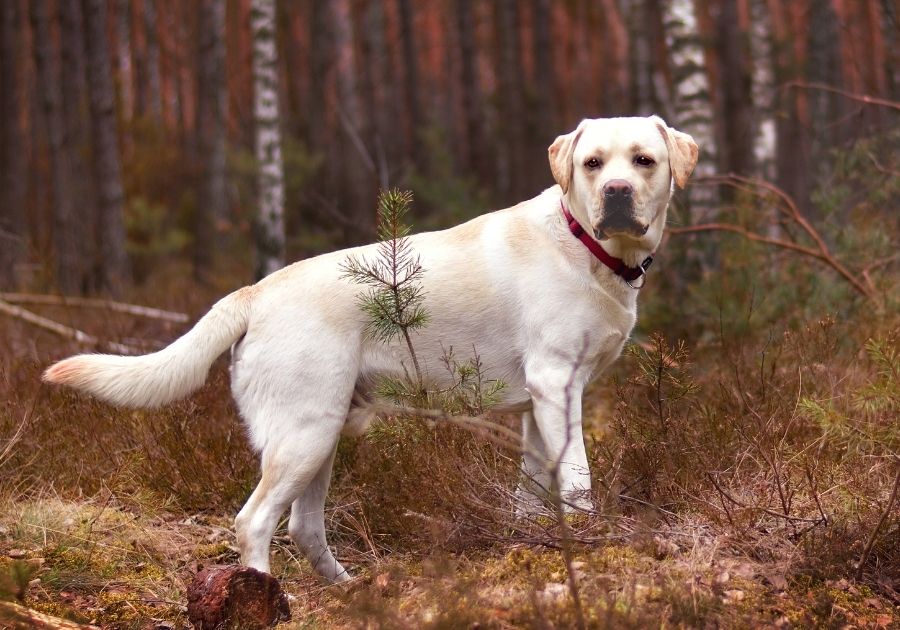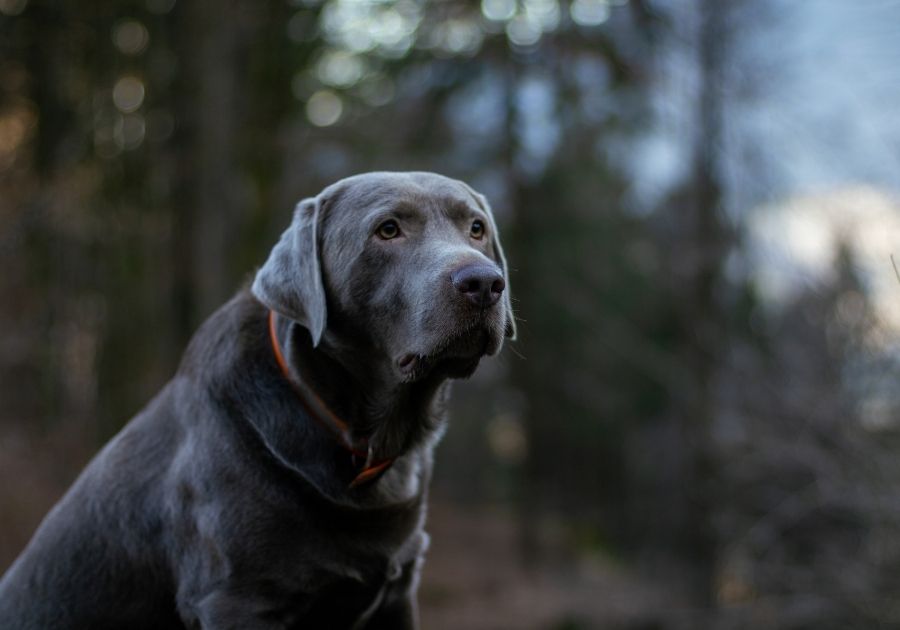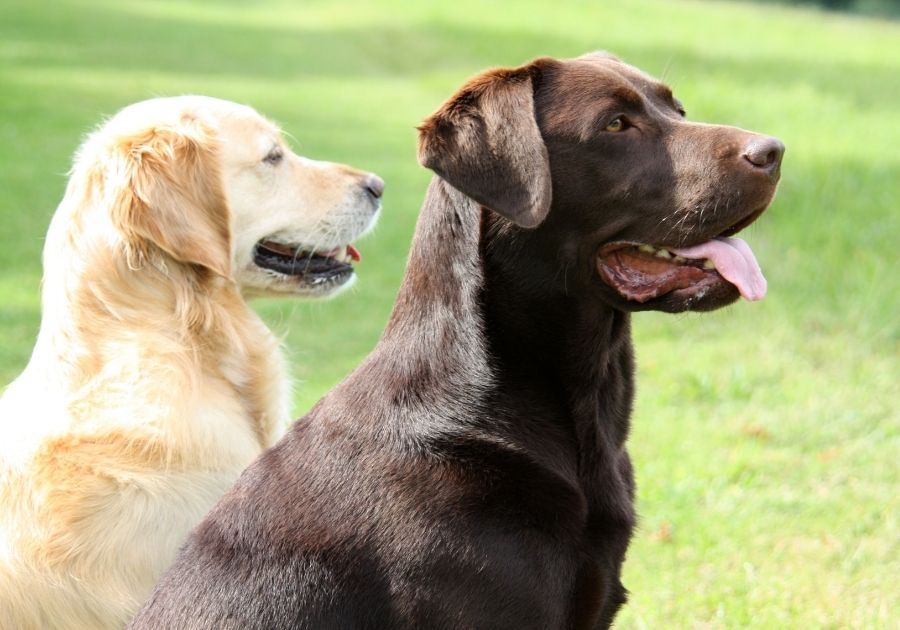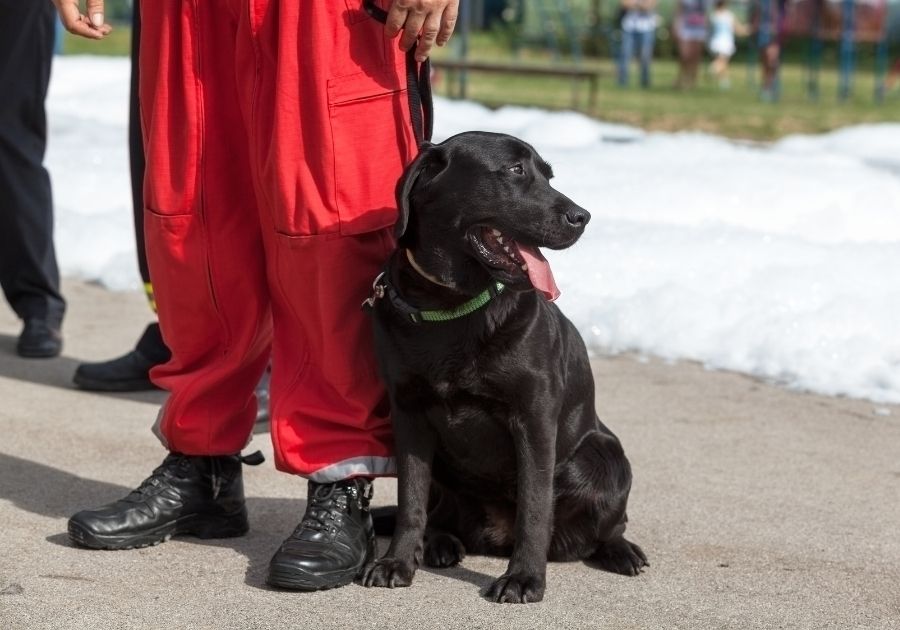Topping the most popular dog breeds charts since 1991, the Labrador Retriever has been termed America’s favorite for good reasons.
With its adorable looks, charming temperament, and work spirit, Labs appeal even to people that aren’t fans of dogs.
This celebrity canine is also one of the most recognizable dogs out there and has found its way into many American homes.
This article will highlight some very interesting, informative and fun facts about Labrador Retrievers, right after a brief history so we know where the whole story began.
You’d also get tips on shopping or adopting the Labrador Retriever.
Brief History: How the Labrador Retriever Originated

The Labrador Retriever’s story takes us back to a Canadian Island known as Newfoundland. On that island, there existed a breed of devoted fishermen’s assistants called St John’s Water-Dog.
These dogs made fishermen’s jobs easier by retrieving fish and even lost gears. They also played the role of companions after a day’s hard work.
It didn’t take long before foreigners began to notice these dogs, and by 1830 the St John’s Water Dog was in England.
The second Earl of Malmesbury contributed to importing this breed to England and the third Earl first thought up the name “Labrador Dogs”.
Further breeding in England gave us the breed we have today, which is quite different from the original St John’s Water-Dog.
The Labrador Retriever went through a dark period in history that threatened its survival, but thanks to the Malmesbury family and other people, this breed bounced back.
In 1903, the Kennel Club in England recognized the breed. It soon got into the United States and was recognized by the American Kennel Club in 1917.
Labrador Retriever Dog Breed Information
| Height | 21 to 24 inches |
| Weight | 55 to 80 pounds |
| Coat Type | Double, short, dense |
| Coat Colors | Yellow, Black, Chocolate |
| Life Span | 10 to 12 years |
| Temperament | Friendly, Outgoing, Active |
| Ideal For | Active owners |
| AKC Group | Sporting Group |
| Puppy Price | $800 to $1,200 |
20 Informative & Facts About Labrador Retrievers
01. The Labrador Retriever is the most popular dog breed in America for 31 years

In America, the Labrador Retriever became the most popular dog in 1991, overtaking the Cocker Spaniel, which was the most popular dog as of 1990.
The later years saw the Cocker Spaniel dropping, but the Lab has retained its position as US top dog since 1991.
That may not be changing anytime soon, as the 2021 stats show that Labrador is still at the top.
Its contender currently is the French Bulldog, which came 2nd place in 2020 and 2021.
The major reason for this huge popularity is the Labrador Retriever’s temperament. As we’ll soon see, this breed is one of the sweetest dogs to own.
This breed is also popular in other countries like Canada and the United Kingdom.
02. Surprisingly, it almost went extinct
The 1880s was the dark period in Labrador’s history when it almost got extinct.
Its direct ancestor—the St. John’s Dog—got extinct during this period following some government restrictions and tax laws that did not favor dog ownership.
The Lab only got saved in England thanks to the breeding efforts of the Malmesbury family and some other people who preserved the bloodline.
The breed only started rising in popularity after the Second World War.
03. They’re not natives of Labrador, Canada
Though the name suggests otherwise, the Labrador Retriever is from Newfoundland, Canada, as we saw above
They became known as Labrador Retrievers because they worked in the Labrador Sea.
04. The White and Silver Labrador colors are controversial

The standard colors of the Labrador Retriever are black, yellow, and chocolate. Besides those, two other colors are seen as controversial: white and silver.
However, the white Labrador is classified as a lighter shade of yellow, which makes it easier to explain. The silver Lab remains unique.
The debate on the Silver Lab doesn’t seem to be ending anytime soon.
While some assert that it is a purebred Labrador with a different color, others hold a contrary position. To them, the Silver Labrador is a mix of the Lab and the Weimaraner.
Silver remains an unrecognized color, but a beautiful one nonetheless. We should also point out that silver and other colors do not affect a Labrador’s temperaments.
Some folks erroneously assume otherwise, but temperament has other deciding factors.
05. Puppies of the same litter can have different colors
If you expect Labrador puppies to get the same colors as their parents, you might be in for a surprise.
The Labrador color genetics is unpredictable, and you might wound up seeing puppies of the same litter having black, yellow, and chocolate colors.
06. Bill Clinton once owned a Labrador Retriever

Former president Bill Clinton had a Chocolate Labrador Retriever named Buddy.
The Clinton family owned Buddy alongside a cat named Socks, both of which did not get along and had to be kept separate. (This is specific to Buddy, though, as Labs can coexist with cats.)
Sadly, Buddy died at the age of 4 after being hit by a car. Nothing could be done to save it. Some years after the unfortunate incident, Clinton got another Chocolate Labrador named Seamus.
Some other popular individuals who have been pet parents to Labs are Prince Charles, Arnold Schwarzenegger, Caitlyn Jenner, Anne Hathaway, and Christiano Ronaldo.
Fun fact: Led Zeppelin band even named a song “Black Dog” after a stray Black Lab.
07. The Labrador Retriever and Golden Retriever look similar

The Labrador Retriever is very similar in looks to the Golden Retriever, the 3rd most popular dog breed in the United States.
Labs and Goldens can be confusing to differentiate, but they do have significant differences. They are both retrievers, which could explain their similar looks.
Labs and Goldens aren’t the only retrievers, though they are the most popular ones. There are 6 known types of retrievers in the world today.
Besides the Labs and the Goldens, we have Flat-Coated Retrievers, Curly Coated Retrievers, Chesapeake Retrievers, and Nova Scotia Duck Tolling Retrievers.
Some other dog breeds like the Poodle have been known to retrieve too.
Recommended:
Labrador Retriever vs. Golden Retriever Differences & Facts
08. There are two types of Labrador Retrievers

The Labrador Retriever dog breed can be subdivided into two types: the English Labrador Retriever and the American Labrador Retriever.
These have nothing to do with locations, though. The English Lab isn’t only found in England and the American Lab isn’t only found in America.
The classification is based on body types and functions. The English Labrador is muscular and has a stocky build, making it better for show. The American Labrador is slimmer and good for work.
The English Lab is also known as the show-type dog while the American Lab can be called the work-type dog.
Both make good family dogs, but the American Labrador is usually easier to train.
The English Lab has its advantage over the American Lab too as it becomes less energetic as it ages.
09. They make good guide dogs

Labradors are excellent choices for service dogs such as being guide dogs for the visually impaired.
Because they are eager to please and easy to train, the breed is fit for this role. Statistics prove this.
Labs, Goldens, and the mixed breed of the two (called the Goldador) are the most common guide dogs in America, more than other breeds.
These dogs go through a series of guide dog training for them to carry out this role.
10. Labradors can sniff out cancer
This might come as a surprising and unbelievable fact, but it is true. Labradors have a strong sense of smell and have been known to pick up cancer. Studies have proved this.
Cancer has a particular odor that humans may not be able to pick up because of our limited sense of smell, but some canines can smell it easily.
With a sense of smell that’s estimated to be more than 10,000 times more than ours, it shouldn’t be so shocking.
Labs aren’t the only dog breed that can achieve this, though.
11. They are considered the best family pets
The trump card of the Labrador Retriever is its temperament, and these traits have ensured it stayed as a top dog.
Though “best” is subjective when it comes to pets as we all have our favorite dog breeds, stats still keep this breed on the throne.
Labradors are friendly, social, and extroverted. They love being around people, including strangers.
These sweet dogs would not think of purposely hurting someone, and you can count on a well-trained Lab to not be aggressive.
Labs are also kid-friendly and would want to be around them. Only toddlers shouldn’t be left close to this breed because of its energetic nature.
They can also get along well with other pets when fully trained.
The Lab is highly intelligent as well—one of the top 10 intelligent dogs we know. This, added to its willingness to please, making it an excellent family dog.
12. A Labrador was the first dog to appear in the LIFE Magazine

The Labrador Retriever has been topping lists and breaking records. One of such is being the first dog breed to be used on the cover of LIFE magazine.
Considering that Americans have owned dogs way before their independence, showcasing a dog in a magazine was long overdue.
It finally happened in 1938, on the December 12th issue, when a Black Lab Retriever was featured on the cover.
13. Labradors are mouthy and love to eat
As retrievers, Labs are good at using their mouths. They were bred to be able to retrieve fishes with their mouths without destroying them.
Old instincts die hard in dogs, so don’t be surprised if your Lab puts things in its mouth. It could even hold your leg, arm, or foot.
If you’ve never owned a Lab before, this could be discomforting. It doesn’t do this to bite or hurt though.
Just as this breed could retrieve fish safely, you don’t have anything to worry about when it displays this behavior. Get it some chew toys that could keep its mouth busy.
Labs also like to eat and rarely lack appetite unless they are sick. They’d gobble up any meal in sight with relish.
This huge appetite is good for its well-being, but it can also cause obesity.
Measuring its meal and giving it enough exercise can help control its weight. We recommend 2.5 to 3 cups, fed twice a day. However, it all depends on your Lab.
14. Labradors are still working dogs
Though more employed as companions now, Labradors are still workers and have not left that role to history.
Their speed and working spirit have made them good hunting buddies. They also work on farms herding cattle and as service dogs.
This is not your average laid-back dog. The Lab is as much a worker as it is a companion.
15. One Labrador was jailed, another became a Mayor
This breed has many interesting stories, two of which we will include in our facts in contrasting paragraphs.
One story centers on an alleged murderer, the other is about a canine mayor (yes, both stories are real).
In Pennsylvania, a Labrador named Pep was arrested and charged with the murder of a Governor’s wife’s cat. This happened in the early 1900s.
The Governor convicted the dog of murder and gave it a life sentence. Turns out the dog didn’t murder any cat but served as a morale boost for the prisoners—something this breed is good at.
We move to California, where a Labrador was crowned mayor of a town named Sumol. Bosco was its name, and it was a Labrador mix.
It contested for the post of mayor against two other members and won. While the post was honorary and all for fun, it did show how much Labs are loved.
16. Labradors need a lot of exercise and don’t fancy being left alone
As Sporting dogs, Labradors are highly energetic. It takes a lot to calm the Lab down, and without enough exercise, this breed can get destructive.
To a couch potato, this breed would be frustrating. This breed require around 30 minutes to an hour of exercise.
They get bored easily, so ensure that the activities are interesting. Challenge them with some mental activities as well.
Another situation that can make your Lab get destructive is being left alone.
Because Labs love people, they shouldn’t be isolated for long or they might start digging holes in the yard or chewing anything in sight.
17. They make good search, rescue, and therapy dogs

Other services this breed renders to society include search and rescue with therapy.
Labradors are good for search and rescue missions and have been successful in doing that in the past.
Other good search and rescue dogs include the Bloodhound, Coonhound, German Shepherd, and Border Collie.
Therapy dogs help people sort out mental issues like PTSD, anxiety, and depression. They offer comfort during the process.
The winning Labrador’s personality makes it a good candidate for this role. Poodles, Golden Retrievers, and Pomeranians are some other good therapy dog breeds.
18. They are good for first-time owners, but not suitable for apartments
The Lab’s eagerness to please and intelligence make it a highly trainable breed, and you don’t need years of experience to train it. It is easy to teach it how to obey commands and to socialize them as well.
This makes it a good first-time dog, especially for those who would prefer to start their pet parenting journey with a big dog.
Those living in apartments should go for smaller breeds, though. The Labrador Retriever is too big and energetic for an apartment and may cause issues for an apartment dweller.
It is the best fit for someone that has enough living space.
Recommended:
What Are The 7 Basic Dog Commands? Sit, Stay & More
19. The Labrador Retriever is a high shedder and is not hypoallergenic
The Lab is easy to groom, another quality that endears it to pet parents. However, it sheds a lot and is a poor choice for people with allergies.
You should brush them more during those periods and keep a vacuum cleaner handy.
Labs need a bath with a good dog shampoo about once every two months or anytime it rolls in the mud.
It is also prone to ear infections because of its droopy ears and love for water, so you should clean its ears regularly. Brush its teeth and trim the nails as well.
Recommended:
10 Best Brush For Short Hair Dogs & Why They’re Good
20. Joint problems is a major health issue with the Labrador Retriever
Many big dogs are vulnerable to joint problems because of their weight, and this breed is not an exception.
The Lab is susceptible to hip and elbow dysplasia, both of which affect the joints and limits the dog’s movement.
These conditions are genetic and you can avoid struggling with them by getting a Lab puppy that doesn’t have these illnesses in its genes.
Other Labrador Retriever health issues include are epilepsy, eye issues like cataracts and Progressive Retinal Atrophy (PRA), bloat, myopathy, and Osteochondrosis Dissecans (OCD).
How to Get a Labrador Retriever

This breed is one of the easiest dogs to find because of its popularity. It is not as expensive as many dog breeds you’d find out there, but it isn’t too cheap either.
The estimated price range of a purebred Labrador Retriever puppy is between $800 and $1,200. It could be higher or lower, depending on different factors.
Be wary of Labrador puppies that are too cheap, though. They might end up being ill-bred.
Finding a good Labrador breeder is the first step to take in getting a healthy, well-balanced pup.
This breeder should be able to cross out all doubts by answering your questions and providing enough evidence that the pup is healthy and well-bred.
Care to adopt a Lab? If you don’t want to shop, you can opt for adoption. While this breed is popular and well-loved, it can be abandoned for many reasons.
FAQs
Can a Labrador live up to 20 years?
Labradors have a fairly long life span of 10 to 12 years, though some can live up to 14 years. That’s about as high as they do.
Only a few dog breeds like the Chihuahua, the Yorkshire Terrier, and the Daschund can live up to 20 years.
What is the rarest Lab color?
The Chocolate Labrador is the rarest of the 3 standard colors. Some other unrecognized colors are often marketed as “rare”, but the focus here is on those the major Kennel Clubs recognize.
Which Labrador is the smartest?
Black Labradors are usually considered the smartest of all, but that borders on speculations as colors don’t influence temperament and even intelligence.
Final Thoughts
There are a host of other fascinating facts about Labrador Retrievers we did not include in this article, and you can mention anyone we might have missed out on.
With a dog this popular, there are no doubts of many records on it.
Getting this breed as a pet dog is a good decision, as long as you can meet its needs.
You May Also Enjoy:
20 Facts About Golden Retrievers You Probably Didn’t Know







